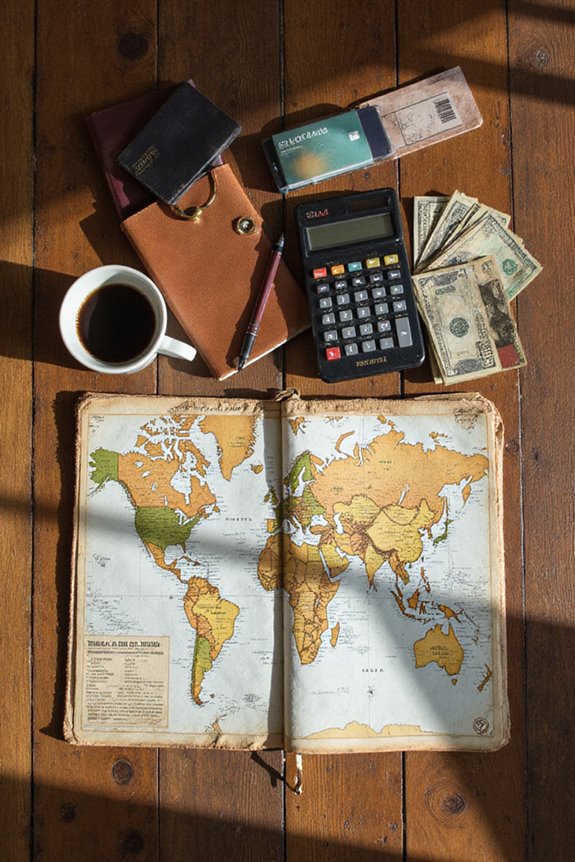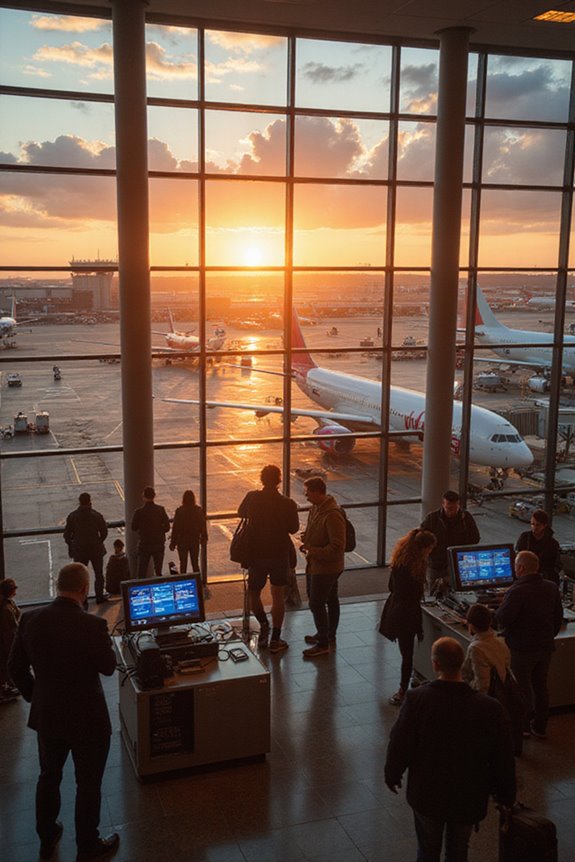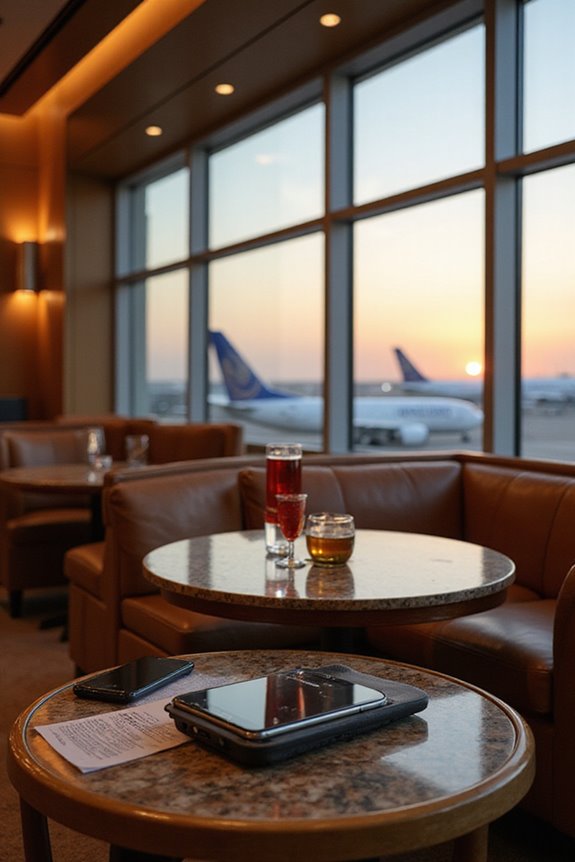Creating a travel budget is like packing for a trip: it requires planning and attention to detail. I start by listing my must-haves, like transport, lodging, and meals, then add a little extra for those unexpected treats. Scoring deals through advance bookings saves me cash, and I keep an eye on my spending with handy apps. It’s all about staying committed! When you align your budget with your travel goals, your adventures become so much more fun—there’s plenty more to explore!
Key Takeaways
- Assess all potential travel costs, including transportation, accommodation, food, and incidentals, for a comprehensive budget overview.
- Book flights and accommodations in advance to capitalize on discounts and avoid peak season price hikes.
- Categorize expenses into fixed and variable costs to prioritize spending and manage discretionary funds effectively.
- Use expense tracking apps for real-time monitoring and alerts to stay within your budget throughout the trip.
- Set clear financial goals and visual reminders to reinforce your commitment to the budget and enhance accountability.
Understanding Your Travel Budget Needs
When I first started planning my travels, I had no idea how essential it was to really understand my budget needs. I quickly learned that transportation costs can eat up a big chunk of my funds, whether I’m driving my car or hopping on a plane. Then there’s the whole accommodation options dilemma—choosing between a cozy hotel or camping under the stars can make a difference. And let’s not forget about food budgeting! I used to underestimate how much I’d spend on meals and snacks; those little coffee stops add up! Finally, incidentals planning is vital, from tipping to souvenirs. Getting a grip on these aspects transformed my travel experience and kept my wallet happy! Additionally, considering waterproof materials for toiletries can help prevent unexpected expenses from spills and leaks.
Effective Cost-Saving Strategies
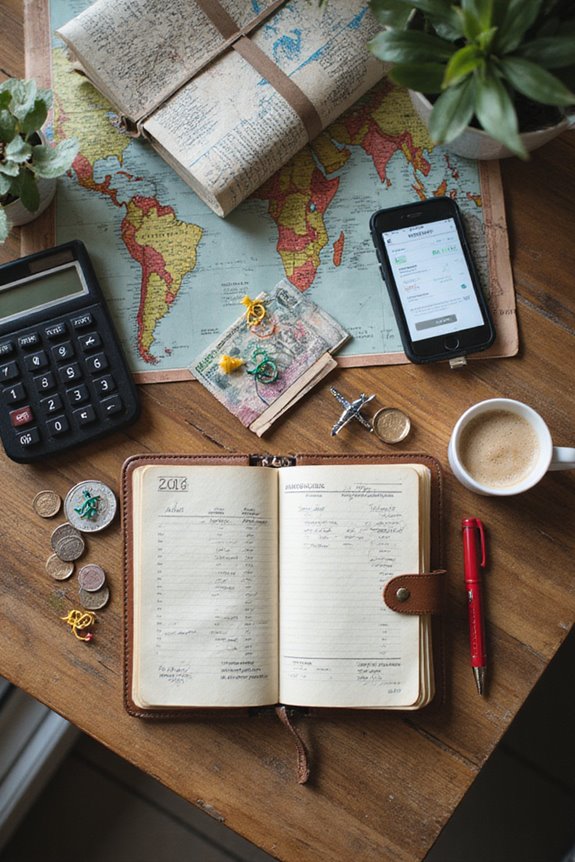
Now that I’ve got a better handle on my travel budget needs, let’s talk about how to save those hard-earned dollars while still enjoying every bit of the journey. One of my best secrets? Advance booking! I’ve saved up to 30% on flights and hotels just by planning ahead. Imagine turning a $300 flight into $210—sweet, right? I also love snagging corporate discounts when I can. Building relationships with airlines or hotels opens up perks like priority boarding and upgrades. Plus, I often explore alternative accommodations, like charming boutique hotels or even Airbnb. And let’s not forget about public transport! It’s cheaper and a great way to soak in the local vibe. Trust me, these strategies work wonders for my wallet! Additionally, investing in a stylish and functional luggage set can enhance your travel experience while keeping costs down in the long run.
Tracking and Monitoring Travel Expenses
Tracking travel expenses can feel like a challenging task, but trust me, it doesn’t have to be! I’ve learned that using automated travel expense tracking systems can truly simplify things. With features like optical character recognition, snapping a photo of a receipt captures all the essential info, cutting down on errors. Plus, having expenses categorized—like meals or lodging—lets you see where your money’s going at a glance. Real-time expense monitoring means I can adjust my budget on the fly, catching any overspending before it spirals out of control. I even set alerts for when expenses start inching towards my limits. By staying organized, I can enjoy my trip without stressing over finances!
Prioritizing Travel Expenses
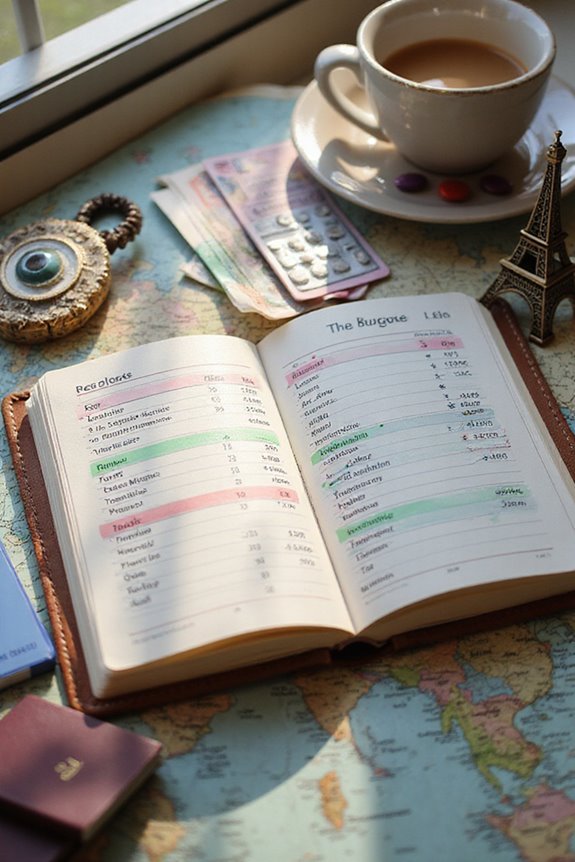
Prioritizing travel expenses can feel a bit challenging, especially when you’re excited about all the adventures ahead, but trust me, it’s worth taking the time to get it right. First, I classify my expenses into categories like transportation, accommodation, meals, activities, and incidentals. I focus on expense classification, distinguishing between fixed costs like airfare and variable costs like meals. Once I’ve covered essential expenses, I allocate my budget for discretionary spending, ensuring I stick to what really matters for the trip. I also set per diem allowances to prevent overspending. By keeping an eye on historical spending and adjusting my budget allocation as needed, I can enjoy my travels without breaking the bank. Plus, it feels good to have a plan!
Setting Realistic Travel Expectations
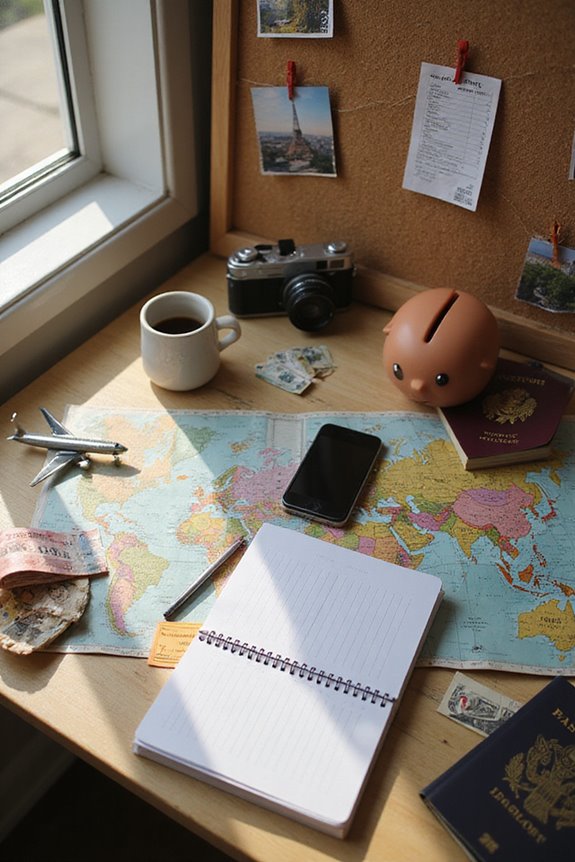
After figuring out where to allocate your travel budget, it’s time to talk about setting expectations for your trip. With 92% of Americans planning to travel in 2025, it’s clear that travel trends are shifting, and we need to prepare for some cost variability. I remember planning a trip to Paris, only to find prices skyrocketing! It’s essential to take into account factors like seasonal pricing and the popularity of destinations. For instance, Orlando might be a budget buster during peak times. So, whether you’re dreaming of relaxation or adventure, align your budget with your priorities. And don’t forget to keep an eye on those unexpected fees that can sneak up on you. Trust me, staying realistic makes all the difference! Additionally, considering the importance of portability in your travel gear can help you save on luggage fees and make your journey smoother.
Commitment to Your Travel Budget
When I first started planning my trips, sticking to a budget felt like trying to tame a wild beast—exciting but utterly chaotic! I quickly realized that psychological commitment is key. Setting clear financial goals helped me stay focused; I’d even create visual reminders, like charts, to keep my savings in check. Social influences also played a big role—traveling with friends who understood my budget made it easier to resist the temptation of splurging. I learned to prioritize budget-friendly meals and activities, avoiding those pricey tourist traps. Plus, using apps for daily expense tracking kept me accountable. Celebrating small milestones made the journey fun, reinforcing my commitment to sticking to my budget, and keeping the wild beast at bay!
Frequently Asked Questions
How Can I Adjust My Budget for Spontaneous Trips?
I adjust my budget for spontaneous trips by setting aside spontaneous savings and embracing flexible planning. This way, I can seize last-minute opportunities without guilt, enjoying the thrill of travel while staying financially responsible.
What Tools Can Help With Long-Term Travel Budgeting?
Envision your travel dreams woven into a tapestry of financial planning. I’ve found budgeting apps like Wanderlog and Expensify invaluable, guiding me through the intricate dance of long-term travel budgeting and expense management.
How Do Travel Budgets Differ for Solo Vs Group Trips?
When I compare solo expenses to group dynamics, I notice solo travel often leads to higher costs per person, while groups can share expenses, making it easier to budget collectively and enjoy more activities together.
Can I Include Experiences Like Tours in My Budget?
Absolutely, I’d say including experiences like tours in my budget is a game-changer! With experiential budgeting, I can track tour costs and guarantee I don’t overspend, making my adventures even more unforgettable.
What Should I Do if My Budget Exceeds Expectations?
If my budget exceeds expectations, I make immediate budget adjustments by cutting non-essential expenses and reallocating saved funds. I also track unexpected expenses closely, ensuring I stay aware of my spending throughout the trip.

